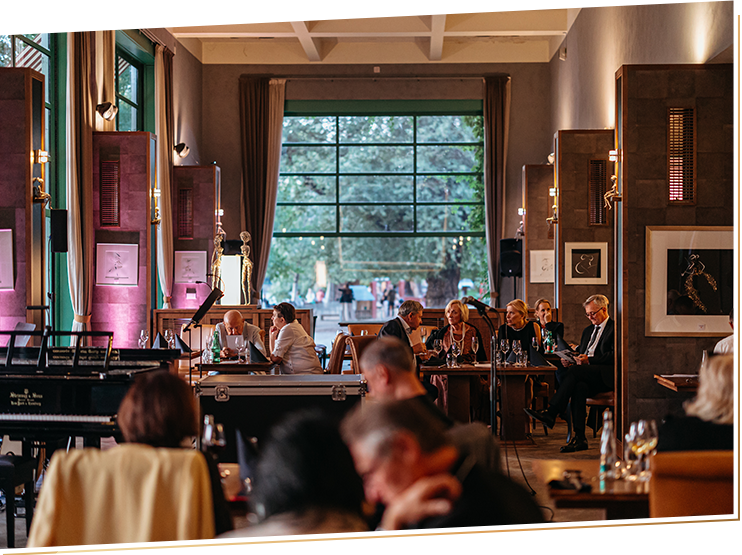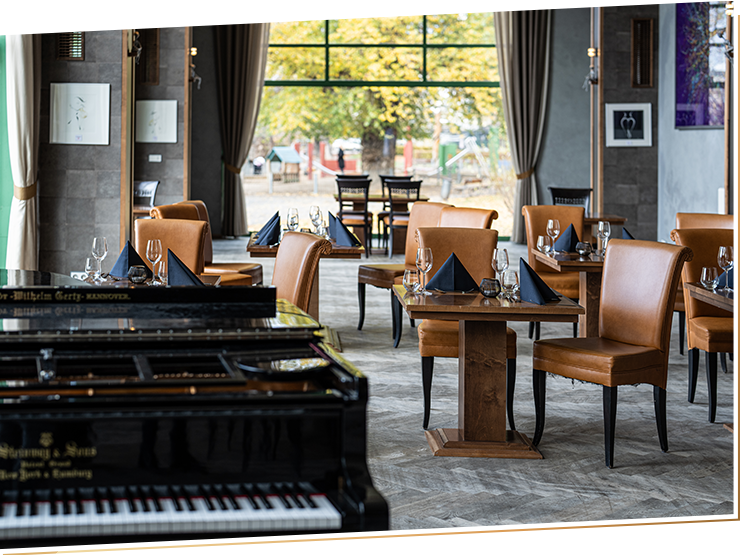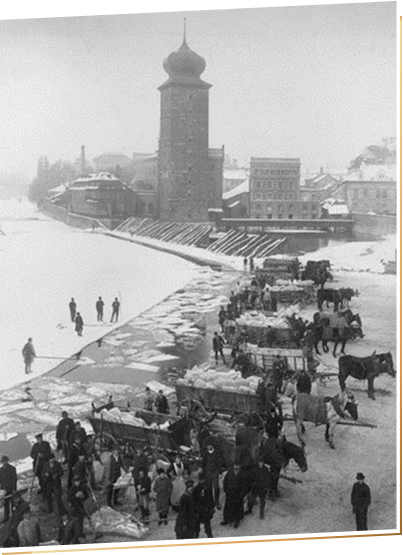Art Restaurant Mánes
Art Restaurant Mánes
Art Restaurant Mánes is complex combining culture, art and luxurious food.
The original restaurant Mánes with a terrace and Emil Filla´s ceiling frescoes has been restored. In the café area you´ll find a renovated Steinway grand piano from 1897.
Restaurant Mánes comes to life again and art and music return here. The authentic atmosphere completes the historical piano made by the Steinway & Sons state of the art company that was regularly played by the famous Czech jazz pianist, conductor and composer Jaroslav Ježek.


The central space of the building is the main exhibition hall, designed to host exhibitions of various visual art disciplines at a global level. The hall extends to the 2nd floor in its central part and is illuminated by a glass steel gabled roof.
On the lower floor, there are two multifunctional spaces for hosting screenings, lectures, workshops, auctions, smaller exhibitions, and more.
Mánes, together with the Štítkov Water Tower, is registered in the Central list of Cultural Monuments of the Czech Republic and protected as an immovable heritage.
The association of visual artists Mánes
The Mánes cultural complex was built by the association of visual artists Mánes, founded in 1887.
A new building was built on the site of the Šítkov mills and the water tower. The condition to recieve a construction permit was to maintain the river flow and demolish the old building.
The architectural design was prepared by the Mánes association chairman Otakar Novotný. In his design he presented a functionalist building very naturally connected to the historical stone tower. Despite the complications of demolishing the mill, the new gallery opened after 16 months, in October 1930.
The building is situated similarly to the original mills and gently complements the renaissance water tower. It excels in unexpected views of the city, which are even enhanced by the narrow walking terraces along the building. Wherever you sit or stand, you have something to look at.
In 2012–2014, a complete reconstruction was carried out. This returned the building to its 1930s appearance. It followed the renovations of the lower part of the building and the strengthening of the bridge structure under the water surface in the mid-1990s.

